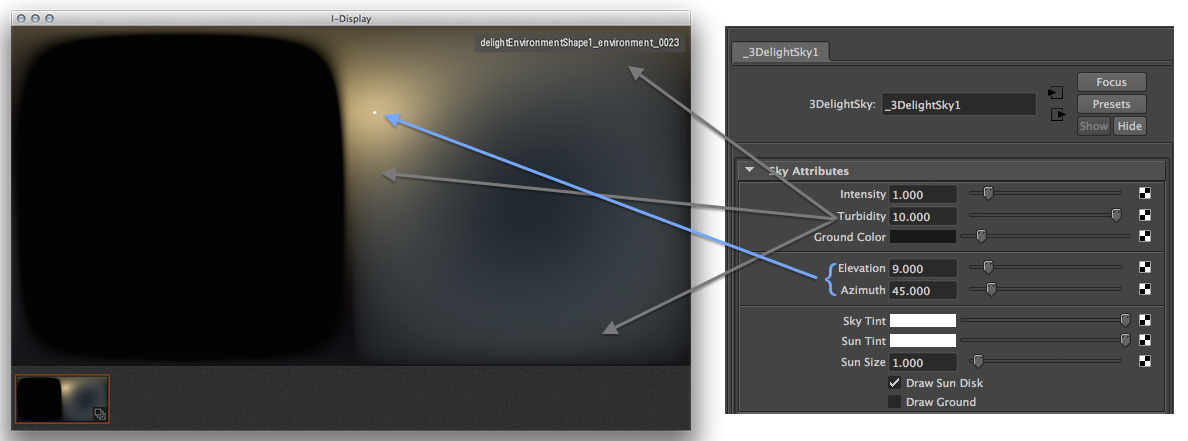...
- Make sure the 3Delight for Maya plugin is loaded for your version of Maya.
- Create a new scene and select 3Delight as a main renderer in render globals.
- Create/import some geometries — for this scene you can use the beautiful and free "Ajax 3D OBJ scan model" from Jotero.
- Apply the general purpose 3Delight Material, a “physically/visually plausible” material which uses the Cook-Torrance BSDF.
- In the Preference choose to render in the Maya Render View or in i-Display (where you can see all the image layers (AOVs) in one go).
- Enable Color Management, to achieve a proper linear workflow, in the Render Globals > Common section.
- In Render Globals > 3Delight's defaul render pass: create a delightEnvironment node.
- Apply an HDRI texture.
Download an HDRI image, for example you can use the "pisa.hdr" texture from Paul Debevec's High Res Probes:
Info Because you have enabled Color Management and because by default the setting in the Render Settings assume you will be inputting to the renderer sRGB images (which is the default too as we implicitly assume the majority of input texture come from non-linear authoring tools, such as Photoshop, and are not pre-linearized) you must remember to override the color profile for the Maya File texture node where you will plug, in this example, the pisa.hdr environment.
If, on the other hand, all your input textures are pre-linearised, then you can switch to linear input color profile in the Render Settings and leave the default inherit behaviour for the Maya File texture node.
- or you can use a procedural texture such as the 3Delight Sky:
- or create and use a "hand made" HDRI texture:
In Nuke you can experiment by roto-painting areas with high dynamic range HSV values, in the following screenshot HSV's V value is set to 4. The size, softness or hardness of the strokes will produce different results in the illumination from the environment. The image should be written out as a 16/32bit EXR or 32 bit HDR.
Aside Nuke there are other tools, such as HDR Light Studio, where you can procedurally author HDRI images or edit existing ones to add new image-based or procedural lights.
- Render – you will get mostly a black image except, if using the 3Delight Material, you should see some reflectivity stored in the corresponding image layer since the default settings of the 3Delight Material have 10% of reflectivity at grazing angles. This step should make clear to you that the environment is visible to reflections and refractions. In order to receive indirect illumination from the environment you will now need indirect illumination.
...






